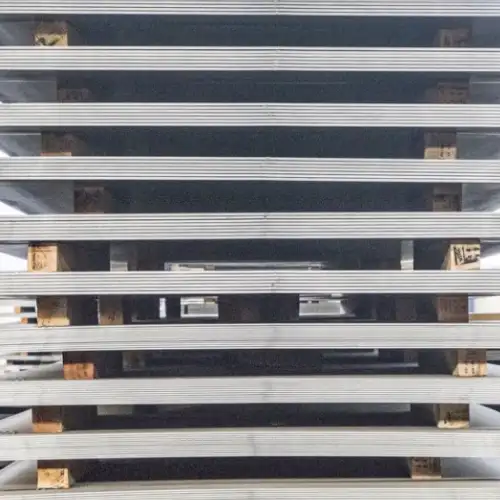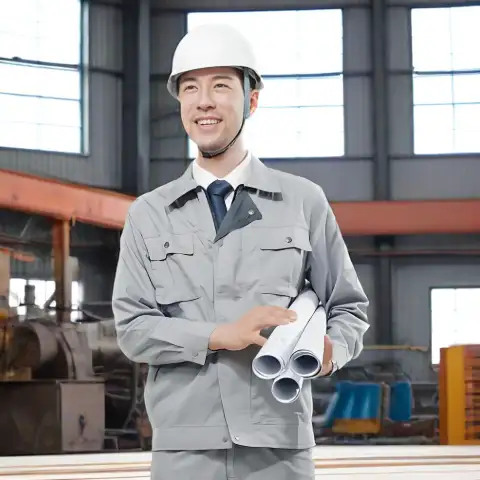ASTM A36 and ASTM A514 are both popular carbon steel grades, yet they serve distinctly different roles: A36 offers excellent weldability and formability for general structural use, while A514 delivers superior high-strength performance for critical, weight-sensitive applications. For clients seeking competitive pricing, rapid delivery, and seamless customization, MWAlloys—based in China with a 100% factory-direct pricing advantage—provides tailored solutions for both grades, backed by extensive inventory and expedited stock shipments.
1、What is the ASTM A36 and ASTM A514?
ASTM A36 is a hot-rolled, carbon-manganese structural steel grade specified under ASTM A36/A36M. It features a maximum carbon content of 0.29 %, manganese up to 1.20 %, and delivers a minimum yield strength of 36 ksi (250 MPa) with tensile strength between 58–80 ksi (400–550 MPa). Its excellent weldability and formability make it the standard choice for building frames, bridges, plates, and general fabrication where moderate strength and ease of machining are required.
ASTM A514 is a quenched and tempered, high-yield alloy steel plate detailed in ASTM A514/A514M. With microalloying elements such as vanadium and molybdenum, it achieves a minimum yield strength of 100 ksi (690 MPa) and tensile strength from 110–136 ksi (760–940 MPa) while maintaining adequate ductility (elongation ≥16 %). This high-strength, weight-saving material is ideal for crane booms, heavy-duty equipment frames, military armor, and other applications demanding maximum load capacity in thinner sections.
2. Key Differences at a Glance
| Attribute | ASTM A36 | ASTM A514 |
|---|---|---|
| Minimum Yield Strength | 250 MPa (36 ksi) | 690 MPa (100 ksi) |
| Tensile Strength Range | 400–550 MPa (58–80 ksi) | 760–940 MPa (110–136 ksi) |
| Carbon Content | 0.25–0.29 % | ≤ 0.23 % |
| Formability | Very good | Limited |
| Weldability | Excellent | Good (preheat recommended) |
| Typical Applications | Building frames, plates, beams | Crane booms, heavy-duty truck frames, structural components where weight saving is critical |

3. ASTM A36 Carbon Steel: Chemical & Mechanical Profile
Chemical Composition (Max. % by weight)
| Element | A36 Max. Content |
|---|---|
| Carbon | 0.29 |
| Manganese | 1.20 |
| Phosphorus | 0.04 |
| Sulfur | 0.05 |
| Silicon | 0.40–0.50 |
Mechanical Properties
-
Yield Strength: ≥ 250 MPa (36 ksi)
-
Tensile Strength: 400–550 MPa (58–80 ksi)
-
Elongation: ≥ 20 % in 200 mm; ≥ 23 % in 50 mm
A36’s balanced composition offers exceptional ductility and toughness at ambient temperatures, making it ideal for forming and welding without special pre- or post-heat treatments.
4. ASTM A514 High-Strength Carbon Steel: Chemical & Mechanical Profile
Chemical Composition (Max. % by weight)
| Element | A514 Max. Content |
|---|---|
| Carbon | 0.23 |
| Manganese | 1.35 |
| Phosphorus | 0.025 |
| Sulfur | 0.015 |
| Vanadium | 0.03–0.10 |
| Molybdenum | 0.12–0.30 |
Mechanical Properties
-
Yield Strength: ≥ 690 MPa (100 ksi)
-
Tensile Strength: 760–940 MPa (110–136 ksi)
-
Elongation: ≥ 16 % in 200 mm; ≥ 18 % in 50 mm
A514’s microalloyed chemistry and controlled rolling deliver superior strength and toughness. However, its higher strength reduces formability and demands careful weld procedures (pre-heating to 150–200 °C is customary).
5. Dimensional Standards, Shapes & Weights
Plate & Sheet Thickness Comparison
| Thickness (in) | A36 Available Range | A514 Available Range |
|---|---|---|
| Minimum | 0.12 | 0.50 |
| Maximum | 8.00 | 4.50 |
Standard Structural Shapes (Example Weights)
| Shape | Designation | Weight per ft (lb) A36 | Weight per ft (lb) A514* |
|---|---|---|---|
| I-Beam | W8×10 | 10.0 | 10.0 |
| H-Beam | W12×50 | 50.0 | 50.0 |
| Angle | L4×4×¼ | 3.17 | 3.17 |
*A514 weights match A36 since cross-sections are identical; strength differences derive purely from chemistry and rolling.
6. Fabrication, Welding & Heat Treatment Considerations
-
ASTM A36
-
Machining & Forming: Straightforward, minimal spring-back.
-
Welding: Compatible with all common filler metals (ER70S-6, E7018). No pre-heat required for thicknesses ≤ 1 in; interpass temperature ≤ 300 °C.
-
-
ASTM A514
-
Machining & Forming: Limited—bending radii should exceed 6× thickness.
-
Welding: Pre-heat to 150–200 °C; interpass ≤ 300 °C; post-weld stress relief may be needed for critical parts to avoid hydrogen cracking.
-
7. Practical Applications & Performance Comparison
| Application | A36 Suitability | A514 Suitability |
|---|---|---|
| Residential & Commercial Structures | Excellent | Not common |
| Heavy Equipment Frames | Adequate (if weight okay) | Preferred (weight-sensitive) |
| Crane Booms & Derricks | Not recommended | Standard |
| Military Armor (fabricated plates) | No | Yes (with additional treatment) |
| General Fabrication | Ideal | Specialized; only if strength essential |
In scenarios demanding high strength-to-weight, A514 often reduces section sizes by up to 30%, yielding lighter structures and lower transportation costs.
8. Global Price Analysis 2025: A36 vs A514
| Region | A36 Price (USD/ton) | A514 Price (USD/ton) |
|---|---|---|
| China | 500 | 800 |
| United States | 600 | 900 |
| Europe | 650 | 950 |
| India | 520 | 820 |
*Prices represent bulk purchases (≥ 10 tons) as of Q2 2025. MWAlloys offers a 100% factory-direct advantage, often undercutting domestic distributors by 10–15%.
9. Why Choose MWAlloys?
-
Factory-Direct Pricing
Our Chinese production line eliminates intermediaries, delivering the most competitive quotes for both A36 and A514. -
Customization Services
From special cut-to-length plates to precision-machined structural components, we tailor to your exact specifications. -
Fast Stock Delivery
With substantial in-stock volumes, standard items ship within 3–5 days; custom batches in 2–3 weeks. -
Quality Assurance
ISO 9001:2015 certified; full mill test reports accompany every order, ensuring compliance with ASTM tolerances. -
Global Reach
Export experience to over 50 countries; robust logistics network ensures seamless delivery and customs clearance.
10. Guidelines for Grade Selection
-
Assess Load & Weight Constraints
-
If weight saving is paramount, opt for A514.
-
-
Evaluate Fabrication Complexity
-
For extensive forming, A36’s ductility is advantageous.
-
-
Consider Welding Requirements
-
If minimal pre-heat is desired, A36 is preferred.
-
-
Budgetary Limits
-
A36’s lower cost suits large frame projects; A514’s premium fits critical high-stress components.
-
-
Corrosion & Surface Treatments
-
Both grades accept galvanizing, painting or cladding; surface prep is identical.
-
11. Ten Frequently Asked Questions
-
Can ASTM A514 be galvanized without losing strength?
Yes—hot-dip galvanizing at 450 °C for short cycles has negligible impact on yield strength. -
Is A36 suitable for hydraulic structures?
Commonly used, but for high-pressure or marine environments, consider corrosion-resistant overlays. -
What is the maximum thickness for welding A514 without pre-heat?
Typically, ≤ 0.75 in might be welded with minimal pre-heat, but 150–200 °C is still recommended for crack prevention. -
Are there cold-forming limitations for A514?
Bends at radii < 6× thickness risk cracking; consult forming charts. -
How do I verify actual grade on delivery?
Review the Mill Test Report (MTR) which certifies chemical and mechanical values per ASTM A6/A6M. -
Can both grades be flame-cut?
Yes, standard oxy-fuel cutting applies; ensure proper edge cleaning for critical welds. -
What corrosion-protection options exist?
Paint systems, galvanizing, metallizing, and specialty coatings—performance equivalent for both grades. -
Is A514 available in plate only or also in beams?
Primarily in plate; structural shapes are less common but can be rolled to order—check MOQ. -
Can I request custom chemistries or tighter tolerances?
MWAlloys facilitates bespoke mill orders to achieve specialized alloying or dimensional tolerances. -
What lead time should I expect for mixed A36/A514 orders?
In-stock A36 ships in 3–5 days; A514 custom runs typically 2–3 weeks, depending on quantity.

